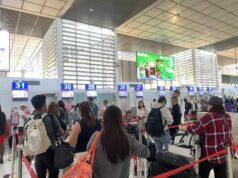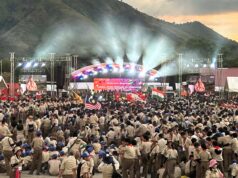CITY OF SAN FERNANDO — Central Luzon’s total population stands at 12,422,172 based on the results of the 2020 Census of Population and Housing (CPH).
The region accounts for 11.39 percent share of the country’s total population of 109,035,343.
National Economic and Development Authority Region 3 director Gina Gacusan said the population growth of Central Luzon is caused by migration.
“The region is attractive to migrants because we have jobs here. We are very near Manila, so the development of Manila radiates in our region,” she said.
The regional population leaped over 11.6 million from 819,768 in 1903 when the first official census was conducted, and has nearly doubled from the 1990 population figure of 6.3 million.
Meanwhile, Gacusan highlighted that Central Luzon is seeing a decline in the population growth rate which means it will have to fund less on social needs, and more on programs for development.
“Our whole nation will have fewer dependents, who are the children. We could have less of them, and more of the people who are working. Since more people are working, there are less to be supported by the government. We’re all looking forward to that. We are beginning to see the good news now because the decline of growth has started,” she said.
Region 3 recorded a 2.17 percent growth rate in 2015-2020, and 1.95 percent in 2010-2015 which are lower than the highest population growth rate of 3.65 percent in 1970.
Among the provinces, Bulacan has the largest population with 3,708,890 followed by Pampanga – 2,437,709; Nueva Ecija – 2,310,134; Tarlac – 1,503,456; Bataan – 853,373; Zambales – 649,615; and Aurora – 235,750.
The highly-urbanized cities of Angeles and Olongapo recorded 462,928 and 260,317 total population, respectively.
The top five most populous component cities are San Jose Del Monte with 651,813 total population, followed by Tarlac – 385,398; San Fernando – 354,666; Cabanatuan – 327,325; and Mabalacat – 293,244.
The most populous municipalities in the region are Sta. Maria in Bulacan with 289,820; Marilao in Bulacan – 254,453; Lubao in Pampanga. – 173,502; Mexico in Pampanga – 173,403; and San Miguel in Bulacan – 172,073.
The largest barangay in the region is Muzon in the City of San Jose Del Monte with 127,506. It was followed by Loma de Gato in Marilao, Bulacan – 71,258; Dau in Mabalacat City – 62,378; and Gaya-gaya in the City of San Jose Del Monte – 56,896.
Philippine Statistics Authority OIC-regional director Arlene Divino said the population count is declared official for all purposes pursuant to Proclamation No. 1179.
“May 2020 was declared as the national census month. However, in light of the Covid-19 pandemic, the census enumeration was moved to September 2020,” she explained.
2020 CPH figures represent the total number of persons living as of 12:01 a.m. on May 1, 2020 in the 17 administrative regions of the country and Filipinos in Philippine embassies, consulates, and missions abroad. — Jag Lyra D. Costamero/PIA-3





